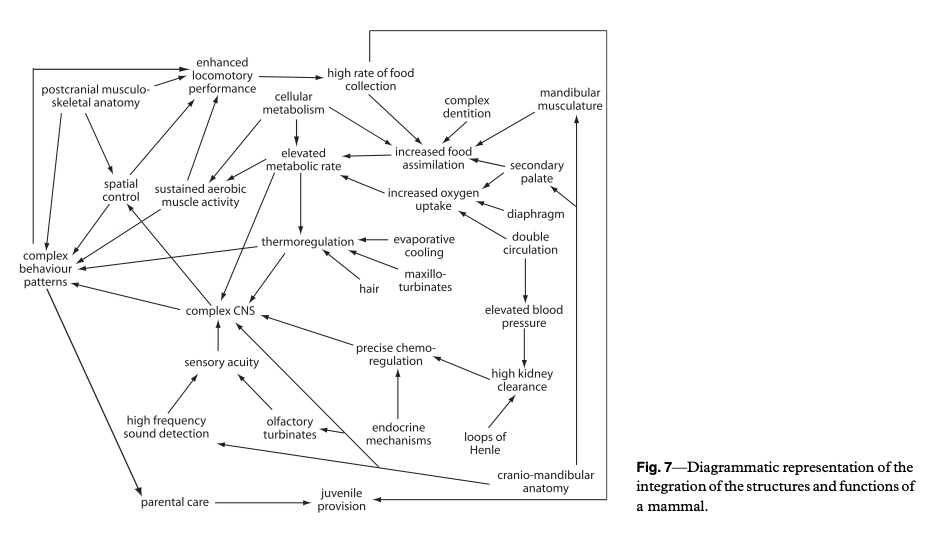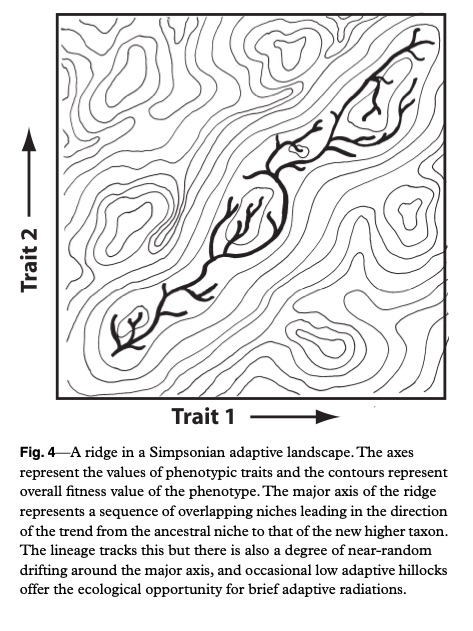“And slime had they for mortar” Genesis 11:3
The last blog post was about a major transition in evolution, the origin of social insect colonies, in which individual ants and bees work together to make up something like a superorganism. Around the same time that this was happening we find evidence for another venture in higher-level evolution, the slime molds. (The evidence is in the form of a recently discovered 100 million year old fossil, although slime molds were probably around long before this.)
John Tyler Bonner, who died in 2019, spent 70 years of a very long life studying cellular slime molds. Here are some weirdly beautiful movies he made. Cellular slime molds switch between being single cell organisms and multicellular organisms. Most of the time they live alone, looking and acting much like non-social amoebae. But when times get tough, and local food resources are exhausted, the cells start sending out chemical signals indicating they are ready to shift to another state. Individual cells aggregate to form a mass, which is capable of moving around, seeking out new food sources, even learning. (In cellular slime molds, cells retain their identity as separate cells. In plasmodial slime molds, the cells merge to form one super cell.) The mass may raise up a fruiting body atop a stem. The spores in the fruiting body may blow away, perhaps being carried some distance to a better home, where the survivors disperse and feast as the cycle begins again. There is an interesting sociobiological puzzle here: the cells forming the stalk are sacrificing themselves for the sake of the spore cells. This is probably an instance of kin selection.
Both social insects and slime molds may carry lessons for human social life, which, on a large scale, is radically different from the social life of our primate near relations. Both social insects and humans commonly build enormous social organizations with high levels of cooperation. These organizations are too large for their members to recognize one another as individuals. Instead they rely on signals to show others that they are the right sort. With social insects, these are mostly chemical signals. With humans these are the various insignia – letters of commission, uniforms, shibboleths, etc. – that mark the bearer as the occupant of a particular social role, independently of his personal character. (“You salute the uniform, not the man.”) For more on this topic, check out Mark Moffett’s The Human Swarm: How Our Societies Arise, Thrive, and Fall.
And, as with slime molds, humans seem to go through characteristic alternations in their social lives, on a time scale of multiple generations. With slime molds there is an alternation between solitary and social phases. With humans there is an alternation between phases of lesser and greater social solidarity (asabiya). Borrowing from Max Weber, we might call this an alternation between routine and charisma. In phases of routine, people learn the rules of their society, and do their best to get ahead by following the rules, or working around them. But in times of crisis, the old ways no longer serve. While slime molds secrete pheromones to instigate aggregation in hard times, humans secrete cosmologies. Prophets arise, with visions of a new order, taking their cues from divine visions, or the Book of Daniel or Revelations, or theories of political economy or race science. The great majority of such projects are stillborn, but occasionally one succeeds, subduing doubters and infidels, overthrowing the established order or leading a chosen people to a new land. The world we live in – the civilizational landscape of Eurasia, the cultural geography of the United States (I write this in Salt Lake City, Utah) – is in some degree the legacy of such projects.
The quotation above from Genesis 11:3 was used by Eric Hoffer in his book The True Believer: Thoughts on the Nature of Mass Movements, published in the early years of the Cold War, still worth reading today.
Related, here’s me on the sociobiology of “ethnic group selection.”



